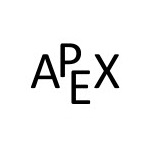1.4.1: Ejercicios 1.4
- Page ID
- 113941
\( \newcommand{\vecs}[1]{\overset { \scriptstyle \rightharpoonup} {\mathbf{#1}} } \)
\( \newcommand{\vecd}[1]{\overset{-\!-\!\rightharpoonup}{\vphantom{a}\smash {#1}}} \)
\( \newcommand{\id}{\mathrm{id}}\) \( \newcommand{\Span}{\mathrm{span}}\)
( \newcommand{\kernel}{\mathrm{null}\,}\) \( \newcommand{\range}{\mathrm{range}\,}\)
\( \newcommand{\RealPart}{\mathrm{Re}}\) \( \newcommand{\ImaginaryPart}{\mathrm{Im}}\)
\( \newcommand{\Argument}{\mathrm{Arg}}\) \( \newcommand{\norm}[1]{\| #1 \|}\)
\( \newcommand{\inner}[2]{\langle #1, #2 \rangle}\)
\( \newcommand{\Span}{\mathrm{span}}\)
\( \newcommand{\id}{\mathrm{id}}\)
\( \newcommand{\Span}{\mathrm{span}}\)
\( \newcommand{\kernel}{\mathrm{null}\,}\)
\( \newcommand{\range}{\mathrm{range}\,}\)
\( \newcommand{\RealPart}{\mathrm{Re}}\)
\( \newcommand{\ImaginaryPart}{\mathrm{Im}}\)
\( \newcommand{\Argument}{\mathrm{Arg}}\)
\( \newcommand{\norm}[1]{\| #1 \|}\)
\( \newcommand{\inner}[2]{\langle #1, #2 \rangle}\)
\( \newcommand{\Span}{\mathrm{span}}\) \( \newcommand{\AA}{\unicode[.8,0]{x212B}}\)
\( \newcommand{\vectorA}[1]{\vec{#1}} % arrow\)
\( \newcommand{\vectorAt}[1]{\vec{\text{#1}}} % arrow\)
\( \newcommand{\vectorB}[1]{\overset { \scriptstyle \rightharpoonup} {\mathbf{#1}} } \)
\( \newcommand{\vectorC}[1]{\textbf{#1}} \)
\( \newcommand{\vectorD}[1]{\overrightarrow{#1}} \)
\( \newcommand{\vectorDt}[1]{\overrightarrow{\text{#1}}} \)
\( \newcommand{\vectE}[1]{\overset{-\!-\!\rightharpoonup}{\vphantom{a}\smash{\mathbf {#1}}}} \)
\( \newcommand{\vecs}[1]{\overset { \scriptstyle \rightharpoonup} {\mathbf{#1}} } \)
\( \newcommand{\vecd}[1]{\overset{-\!-\!\rightharpoonup}{\vphantom{a}\smash {#1}}} \)
Términos y Conceptos
Ejercicio\(\PageIndex{1}\)
¿Se aplican las reglas de exponente a las funciones raíz? Explique.
- Contestar
-
Sí, una función raíz es solo una función de potencia con un exponente fraccionario.
Ejercicio\(\PageIndex{2}\)
Explique por qué un exponente negativo mueve el término al denominador y le da un exponente positivo.
- Contestar
-
Un exponente positivo significa que estamos multiplicando ese término repetidamente, un exponente negativo significa que estamos dividiendo por ese término repetidamente.
Ejercicio\(\PageIndex{3}\)
Es\(3x(2x+3)^{-5/3}\) in radical or exponential form?
- Contestar
-
Forma exponencial
Ejercicio\(\PageIndex{4}\)
Es\(\displaystyle \frac{3x}{\sqrt[3]{(2x+3)^5}}\) in radical or exponential form?
- Contestar
-
Forma radical
Problemas
En ejercicios\(\PageIndex{5}\) -\(\PageIndex{7}\), escribir el término dado sin utilizar exponentes.
Ejercicio\(\PageIndex{5}\)
\(\displaystyle (8x_1-5x_2+11)^{-1/3}\)
- Contestar
-
\(\displaystyle \frac{1}{\sqrt[3]{8x_1-5x_2+11}}\)
Ejercicio\(\PageIndex{6}\)
\(\displaystyle (-2x+y)^{-1/5}\)
- Contestar
-
\(\displaystyle \frac{1}{\sqrt[5]{-2x+y}}\)
Ejercicio\(\PageIndex{7}\)
\(\displaystyle (5x-2)^{1/4}\)
- Contestar
-
\(\displaystyle \sqrt[4]{5x-2}\)
En ejercicios\(\PageIndex{8}\) -\(\PageIndex{10}\), simplificar y escribir el término dado sin usar radicales.
Ejercicio\(\PageIndex{8}\)
\(\displaystyle \Bigg( \sqrt{x} + \frac{1}{\sqrt{x}} \Bigg)^2\)
- Contestar
-
\(\displaystyle x + 2 + \frac{1}{x}\)
Ejercicio\(\PageIndex{9}\)
\(\displaystyle (\sqrt{x})^2 + \Bigg(\frac{1}{\sqrt{x}} \Bigg)^2\)
- Contestar
-
\(\displaystyle x + \frac{1}{x}\)
Ejercicio\(\PageIndex{10}\)
\(\displaystyle \Bigg(\sqrt[3]{x} +1 \Bigg)^3\)
- Contestar
-
\(\displaystyle x + 3x^{2/3} + 3x^{1/3} + 1\)
En ejercicios\(\PageIndex{11}\) -\(\PageIndex{17}\), simplifica el término dado y escribe tu respuesta sin exponentes negativos.
Ejercicio\(\PageIndex{11}\)
\(\displaystyle \Bigg( \frac{-5x^{-1/4}y^3}{x^{1/4}y^{1/2}}\Bigg)^2\)
- Contestar
-
\(\displaystyle \frac{25y^5}{x}, y \neq 0\)
Ejercicio\(\PageIndex{12}\)
\(\displaystyle \Bigg( \frac{-2x^{2/3}y^2}{x^{-2}y^{1/2}}\Bigg)^6\)
- Contestar
-
\(\displaystyle 64x^{16}y^9; x,y \neq 0\)
Ejercicio\(\PageIndex{13}\)
\(\displaystyle \Bigg( \frac{-3s^{2/3}t^2}{4s^3t^{5/3}}\Bigg)^3\)
- Contestar
-
\(\displaystyle \frac{-27t}{64s^7}, t\neq 0\)
Ejercicio\(\PageIndex{14}\)
\(\displaystyle -3(x^2+4x+4)^{-4}(2x+4)\)
- Contestar
-
\(\displaystyle \frac{-6}{(x+2)^7}\)
Ejercicio\(\PageIndex{15}\)
\(\displaystyle \frac{1}{3}(x^4)^{-2/3}(4x^3)\)
- Contestar
-
\(\displaystyle \frac{4x^{1/3}}{3}\)
Ejercicio\(\PageIndex{16}\)
\(\displaystyle \frac{(e^{x+3})^2}{e^{-x}}\)
- Contestar
-
\(\displaystyle e^{3x+6}\)
Ejercicio\(\PageIndex{17}\)
\(\displaystyle \frac{e^{x^2-1}}{e^{x+1}}\)
- Contestar
-
\(\displaystyle e^{x^2-x-2}\)
En ejercicios\(\PageIndex{18}\) -\(\PageIndex{20}\), simplificar y escribir el término dado en forma exponencial.
Ejercicio\(\PageIndex{18}\)
\(\displaystyle \frac{4x-1}{\sqrt[3]{(3x+2)^2}}\)
- Contestar
-
\(\displaystyle (4x-1)(3x+2)^{-2/3}\)
Ejercicio\(\PageIndex{19}\)
\(\displaystyle \sqrt[3]{\Bigg(\frac{e^{4\theta-6}y^2}{e^{\theta}y^{-4}}\Bigg)}\)
- Contestar
-
\(\displaystyle e^{\theta-2}y^2, y \neq 0\)
Ejercicio\(\PageIndex{20}\)
\(\displaystyle \sqrt[4]{\Bigg(\frac{x^2y^5}{y^{-3}}\Bigg)^2}\)
- Contestar
-
\(\displaystyle xy^4, y\neq 0\)


